Top 7 Multi-Value Databases

Organizations use databases to store and manage information on a daily basis and most experienced databases users are familiar with the relational database system. For many years, the relational database model seemed to be the only effective way to store and manage data, but other database systems have proven to be effective in solving the challenges associated with this model.
The database needs of organizations are constantly changing and database users need database systems that can quickly process complex data. Many organizations, companies, and businesses have also realized the importance of using NoSQL databases because of the challenges associated with ordinary SQL databases.
The MultiValue database model is one of the database models that have emerged to deal with the aforementioned problems. Although this model may not be as famous as the relational model, many corporations are using MultiValue databases to manage complex data structures.
What are the Top Multi-Value Databases: InterSystems Caché, InfinityDB, jBASE, OpenQM, Rocket D3, OpenInsight are some of the Top Multi-Value Databases.
What are Multi-Value Databases?
The MultiValue database is a database system that incorporates the features of multidimensional and NoSQL databases to store information. There are significant similarities and differences between the MultiValue model and the relational model. Both database models have schemas and store data in tables.
However, MultiValue databases use a less rigid schema compared to relational databases. Another significant difference is that, in MultiValue databases, a single attribute can have a list of values. This means one table cell (attribute) can have several values, unlike relational databases where each cell can only have one value.
Database developers follow the rules of normalization when designing databases. According to the first rule, a database system should eliminate repetition by storing repeating data in a separate database. However, MultiValue databases discard this rule to simplify applications. Although this may not be the best way to store information in all situations, it is a great way to avoid redundant duplication of data in certain situations.
MultiValue Database is a type of NoSQL and multidimensional database. MultiValue databases differ from a relational database in that they have features that support and encourage the use of attributes which can take a list of values, rather than all attributes being single valued. Most of the MultiValue databases can be accessed both with or without SQL.
There are many MultiValue database vendors and individual products may differ in terms of features. However, the best MultiValue databases have the following features.
- More than one value to an attribute: Can assign more than one value to a single attribute and can store multiple values in the cell.
- Integration: Modern-day database vendors have realized the importance of integration. For this reason, MultiValue software vendors find it necessary to develop database systems that can integrate with other enterprise systems including both SQL and NoSQL database systems. Also, the best MultiValue databases can run on different server operating systems including Windows, Unix, and Linux.
- Less Rigid: Multi value databases are less rigid in comparison to other databases.
- Advanced Security Protocols: The security of any system is one of the most important features. MultiValue database vendors include robust security features such as robust encryption techniques to secure data and database transactions.
- Transactions: The best MultiValue database systems support ACID transactions to ensure data integrity when manipulating data. Such transactions guarantee integrity even if there is a system failure or error.

What are the features of Multi-Value Databases?
Some of the benefits include:
- MultiValue databases save disk space, memory, and processing time.
- MultiValue databases can handle complex data structures.
- Flexibility – There is no need to rebuild the entire database when adding attributes.
- Administrative skills are not necessary.
- Rapid database design and development.
Top Multi-Value Databases
InterSystems Caché
InterSystems Caché is an advanced database management system and rapid application development environment. InterSystems Caché takes the complexity out of application design and deployment. Several high-availability options, including an elegant approach to mirroring, endow applications with robust reliability – but require less hardware than other vendors’ solutions. A flexible, adaptable security model with easy-to-use provisioning capabilities makes it simple to control access to resources. With the overall simplicity of its architecture, and powerful system management tools, Caché requires fewer database administrators (DBAs) than other databases. Within Caché, data can be modeled and stored as tables, objects, or multidimensional arrays (hierarchies).…
• Core processing language that compiles down to efficient runtime C code
• Built in object persistence layer which acts like an ORM
• A compare tool for comparing tables and/or SQL query results
• Unified Multi-Model Architecture
• Complete object and relational database management system
• Built in web gateway with large scale concurrency
Contact for Pricing
InfinityDB
InfinityDB uses a rugged internal storage update protocol for persistence on demand or cache spilling to disk for large amounts of data that maintains system-wide data integrity, and survives abrupt application termination, file system bugs, and kernel panics. The single data file remains up-to-date, safe, correct, and usable through any event. There is no log-based recovery, hence restart and recovery is immediate in all cases. InfinityDB is designed to use one single file. The combination of this feature and the instant recovery help make this product administrator free. No logs need to be archived or re-applied. There are no configuration…
• Nestable Multi-value (can represent trees, graphs, K/V, documents, huge sparse arrays, tables)
• Transactions: Optimistic ACID for threads, or global ACD for bulk operations
• Simple API: Instant developer productivity
• Dynamic views of data for queries: Set logic views, delta views, ranges
• Self administration (one file, no DBA, no upgrade scripts, no logs, no configuration)
• Runtime schema evolution (for forwards/backwards compatibility)
jBASE
jBASE is a world class Database Management System comprising development tools, middleware and a multi-dimensional database. jBASE takes the best points of the relational database model and adds to it several significant benefits including ease of use, superb performance, small footprint and all the rich MultiValue features, making it ideally suited to all business uses from the Internet to OLAP to transactional applications. The architecture is uniquely designed to allow all and any application development tools and backend databases to form part of a jBASE solution. jBASE utilizes a highly flexible multidimensional data model. The fundamental architecture of this data…
• Secure database – Data at Rest Encryption Module
• A jBASE dynamic object can comprise either a list of values called an array or a list of key/value pairs called an object
• Native encryption allows the encryption of selected jBASE data file(s)
• HTTP concepts including headers, cookies and CGI for REST services
• jAgent is a server-side jBASE component responsible for accepting and processing incoming client requests
• The jBASE ODBC Connector is an ODBC driver implementing the Open Database Connectivity (ODBC) 3.0 API
Contact for Pricing
OpenQM
OpenQM, more commonly abbreviated to QM, is the only multi-value database available both as a fully supported commercial product and in open source form under the General Public License. QM is a combined development and runtime environment that allows construction of application software in a fraction of the time taken with some other widely used but significantly more expensive development toolsets. QM has a managed application environment in which user programs run, resulting in high reliability and ease of maintenance. Compiled applications are portable across all platforms (Windows, Linux, AIX, etc) unless operating system specific features are incorporated into the…
• Powerful string manipulation functions
• Fully integrated object oriented programming capabilities
• Multivalued data with a natural language query processor for report generation
• Query processor output in tabular, CSV and XML form
• Virtual File System for access to alien file structures
• Extensive user security options including account restrictions, QMNet server access control and PAM authentication
Contact for Pricing
Rocket D3
Rocket D3 and mvBase solutions are integrated database and application development environments designed for transactional and analytical database applications. They combine scalable, flexible, seamless interoperability with connectivity and low overhead for system management and administration. Read / write in real time with full-featured web-to-MultiValue connectivity—D3 and mvBase DBMSs can read and write to web pages natively and in real time. Make it easy for mobile, web, and desktop applications (and their components) to work together, delivering their combined power to users. Rocket D3 MultiValue delivers robust applications for industries that demand critical performance, including emergency systems, healthcare, financial services, banking,…
• Rapid application development (RAD) tools
• Data connectivity tools
• Field definitions are stored in an integrated data dictionary providing for conversions, formatting and self-documentation
• Import and Export features facilitate complete movement of data between environments
• File Level Encryption Utilizing AES-128 Encryption: Efficient encryption of data offers enhanced file security
• AQL: D3 includes a powerful English-like query and command language, Access Query Language (AQL), most useful for creating result sets and reports
Contact for Pricing
OpenInsight
OpenInsight, Revelation Software's flagship product, is a repository-based applications development environment that enables development teams to work collaboratively to design, develop, deploy and scale high-performance business solutions on leading messaging and client / server platforms. The OpenInsight repository provides a common area in which development teams can store and reuse application components, such as bitmaps, icons, menus, source code module. In addition, it protects the integrity and eases the maintenance of the application by providing version control, automatic documentation of components, impact / net change analysis, and other management capabilities. In addition to providing these tight security features, the OpenInsight…
• The Table Builder is used to create and maintain OpenInsight data file attributes
• The Database Manager is an administrative tool used for database, user, environmental and index management
• Create Wizard: A wizard that lets developers design other wizards
• The Report Builder allows developers and users to generate reports and lables populated by native data from a variety of sources
• RevDotNet functionality is contained in a series of APIs that OpenInsight programmers can call to create and manipulate .NET classes
• Form Designer - A point-and-click WYSIWYG screen painter provides rapid development of windows, forms, and menus
Contact for Pricing
OpenInsight What are Multi-Value Databases? The MultiValue database is a database system that incorporates the features of multidimensional and NoSQL databases to store information. There are significant similarities and differences between the MultiValue model and the relational model. Both database models have schemas and store data in tables. What are the Top Multi-Value Databases? InterSystems Caché, InfinityDB, jBASE, OpenQM, Rocket D3, OpenInsight are some of the Top Multi-Value Databases.







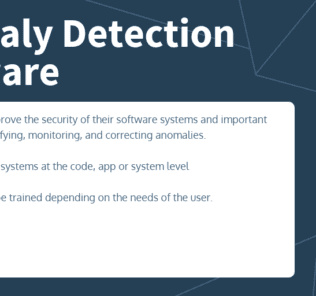
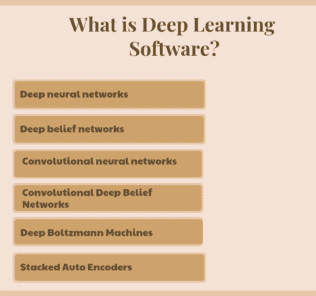
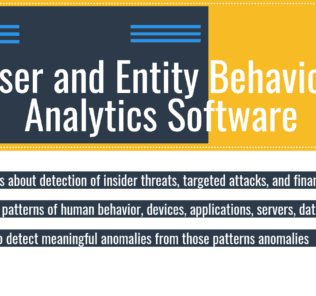
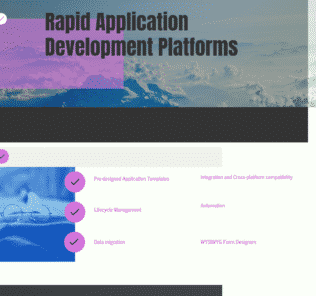
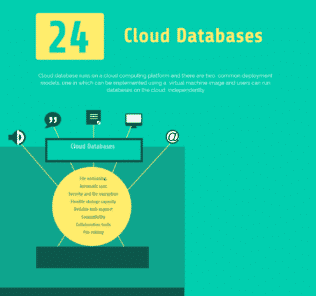
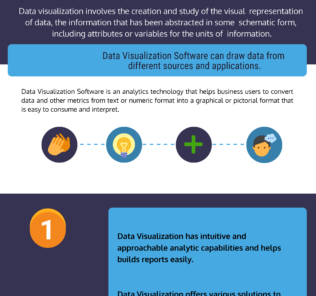




By clicking Sign In with Social Media, you agree to let PAT RESEARCH store, use and/or disclose your Social Media profile and email address in accordance with the PAT RESEARCH Privacy Policy and agree to the Terms of Use.